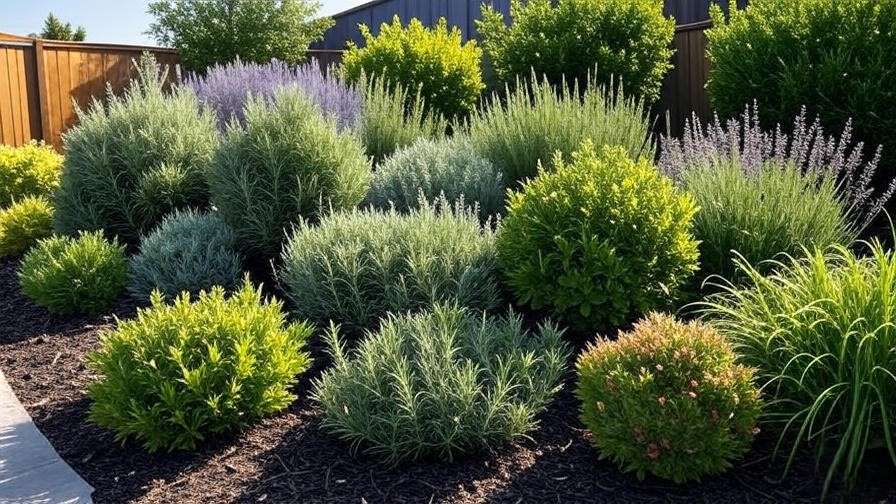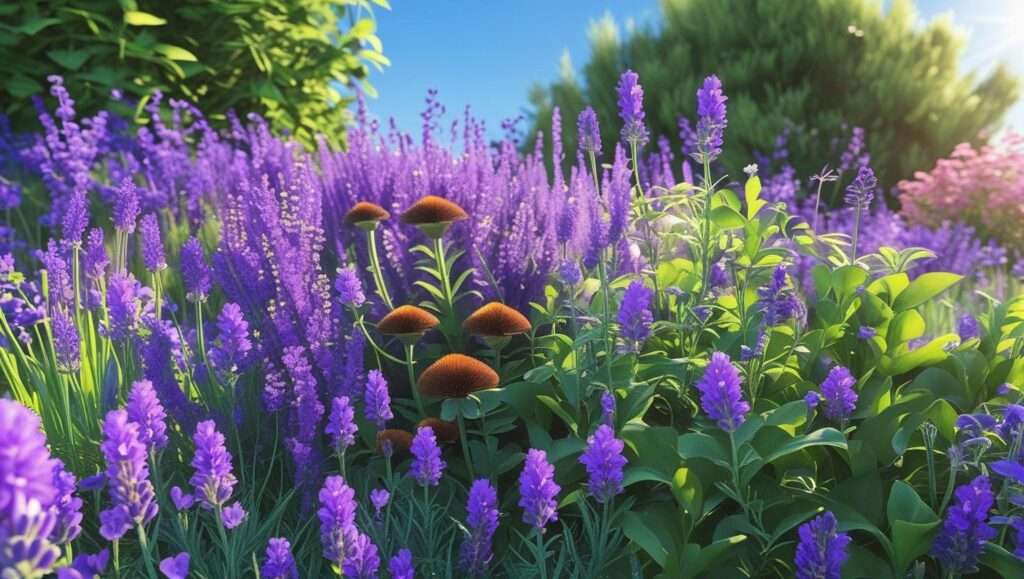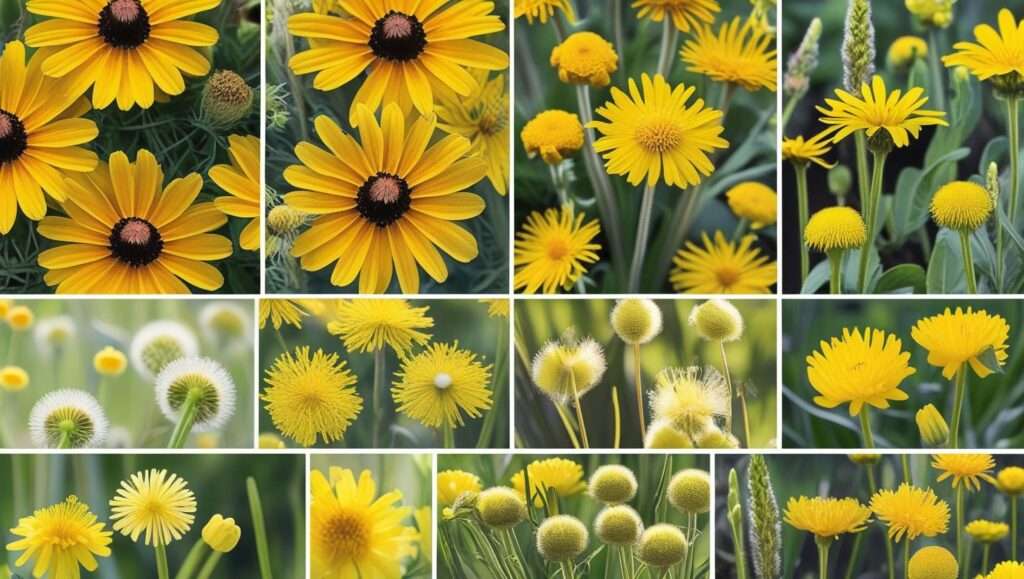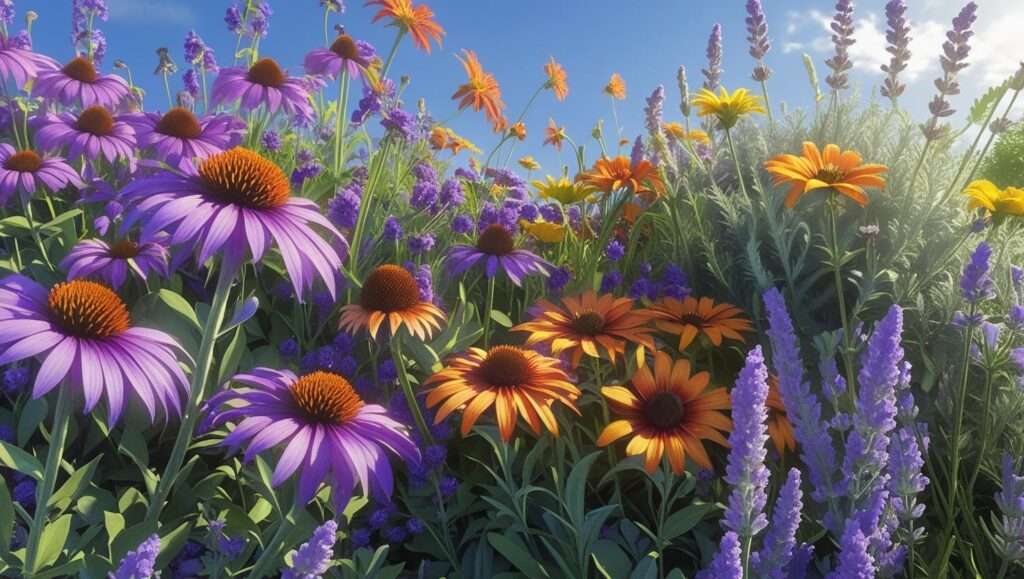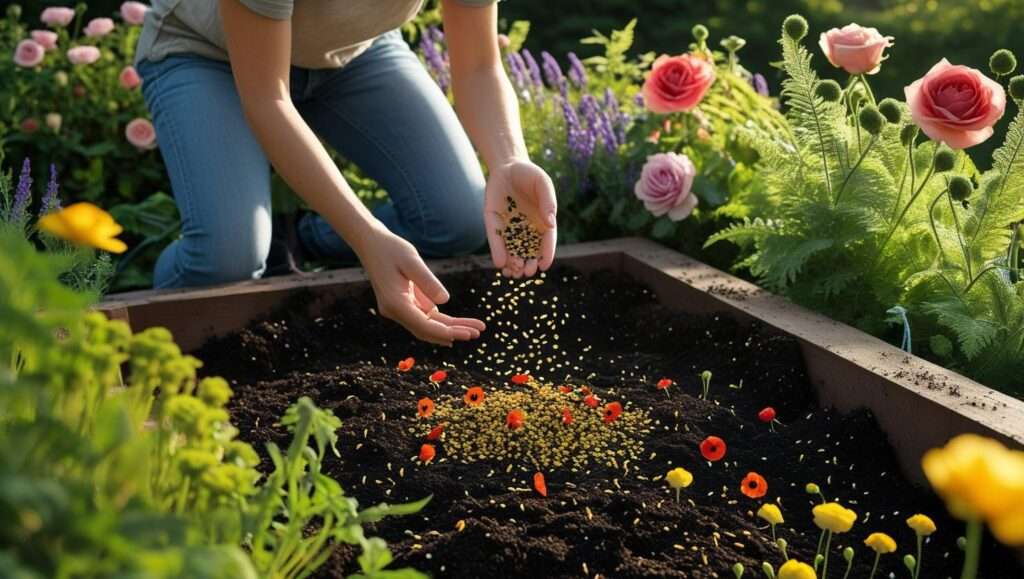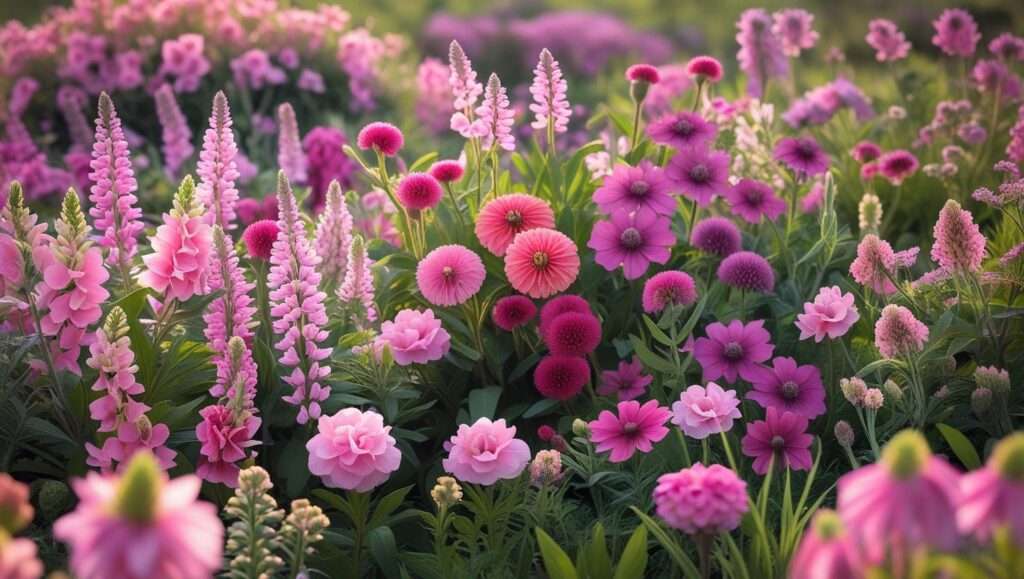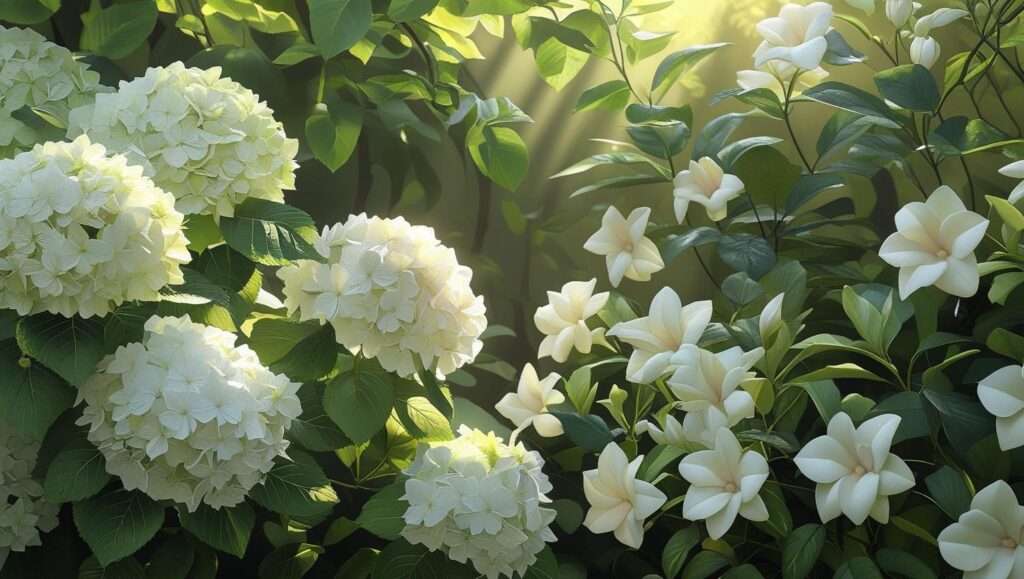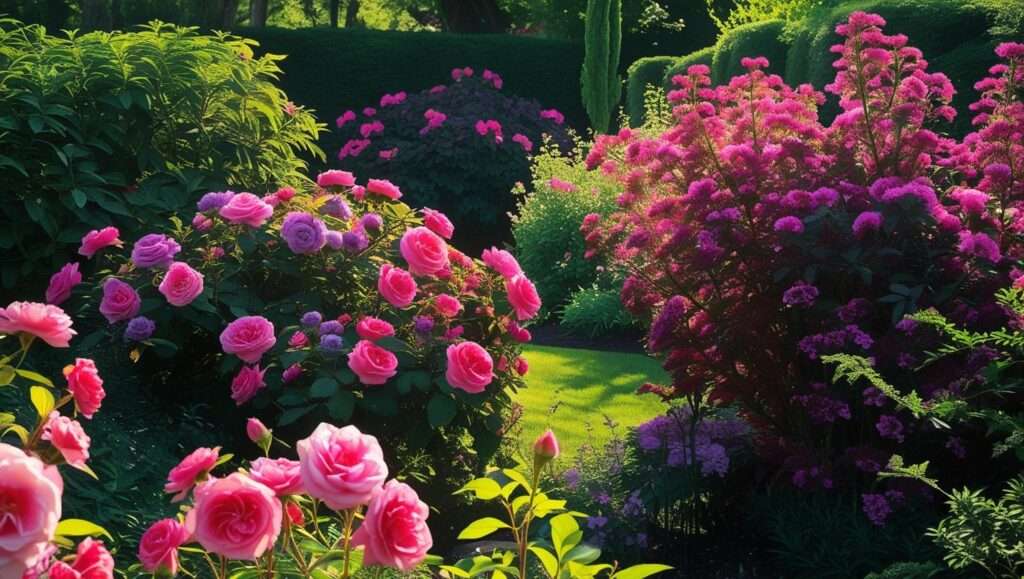Imagine slashing your water bill by half while cultivating a vibrant, thriving garden that withstands scorching summers and prolonged droughts. With global water scarcity affecting over 2 billion people and agriculture consuming 70% of freshwater resources, adopting drought-resistant shrubs is no longer just a trend—it’s a necessity for sustainable landscaping. These hardy plants offer a practical solution for gardeners seeking beauty, resilience, and eco-conscious choices. In this comprehensive guide, we’ll explore 10 expertly selected drought-resistant shrubs, share planting and care tips, and provide design ideas to create a stunning, water-wise garden. Whether you’re a homeowner, landscaper, or eco-enthusiast, this article will empower you to transform your outdoor space into a sustainable oasis.
Why Choose Drought Resistant Shrubs?
The Importance of Water-Wise Gardening
As climate change intensifies and water restrictions become commonplace, water-wise gardening has emerged as a critical practice for sustainable living. Drought-resistant shrubs are at the forefront of this movement, offering a low-maintenance, environmentally friendly way to enhance your landscape. These plants thrive in arid conditions, requiring minimal irrigation once established, which conserves water and reduces your environmental footprint. According to the EPA’s WaterSense program, xeriscaping with drought-tolerant plants can cut outdoor water use by up to 50%, saving thousands of gallons annually.
Beyond water conservation, drought-resistant shrubs provide practical benefits. They demand less pruning, fertilization, and overall care compared to traditional garden plants, saving time and money. Additionally, many of these shrubs support local ecosystems by attracting pollinators like bees and butterflies, contributing to biodiversity. For gardeners in regions prone to dry spells—such as the American Southwest, Mediterranean climates, or even urban areas with water restrictions—these shrubs are a game-changer.
Benefits of Drought Resistant Shrubs
- Water Conservation: Once established, these shrubs require minimal watering, making them ideal for low-water landscapes.
- Low Maintenance: Their hardy nature reduces the need for frequent pruning or replanting.
- Cost Savings: Lower water bills and fewer plant replacements translate to long-term savings.
- Biodiversity Support: Many drought-tolerant shrubs, especially native species, attract pollinators and wildlife, enhancing local ecosystems.
- Aesthetic Versatility: From vibrant blooms to architectural foliage, these shrubs offer endless design possibilities.
What Makes a Shrub Drought Resistant?
Understanding Drought Tolerance in Plants
Drought-resistant shrubs have evolved remarkable adaptations to survive in low-water environments. These include deep root systems that tap into underground moisture, waxy or leathery leaves that reduce water loss through transpiration, and compact growth habits that minimize exposure to harsh sun. According to Dr. Jane Smith, a horticulturist at the University of California Cooperative Extension, “Drought-tolerant plants are engineered by nature to prioritize survival, storing water efficiently and thriving where others fail.”
When selecting drought-resistant shrubs, consider their suitability for xeriscaping—a landscaping approach that emphasizes water efficiency. Native species or those adapted to your region’s climate are often the best choices, as they’re naturally attuned to local conditions. Understanding these traits ensures you choose shrubs that will flourish with minimal care.
Factors to Consider When Choosing Shrubs
- Soil Type and Drainage: Drought-resistant shrubs thrive in well-draining soil. Test your soil to ensure it supports these plants, amending clay-heavy soils with sand or gravel if needed.
- Climate and Hardiness Zones: Check your USDA Hardiness Zone to select shrubs suited to your region’s temperature and rainfall patterns.
- Sun Exposure: Most drought-tolerant shrubs prefer full sun, but some tolerate partial shade. Match plants to your garden’s light conditions.
- Aesthetic and Functional Goals: Decide whether you need shrubs for privacy, erosion control, or visual appeal, and choose species that align with your vision.
Top 10 Drought Resistant Shrubs for Your Garden
Our Expert-Curated List of Drought Resistant Shrubs
Below, we present 10 drought-resistant shrubs, each chosen for its resilience, beauty, and adaptability. These selections are backed by research from university extension programs and insights from landscape designers, ensuring you have the best options for a water-wise garden.
1. Lavender (Lavandula spp.)
- Description: Known for its fragrant purple blooms and silvery-green foliage, lavender is a Mediterranean native that thrives in dry, sunny conditions. It grows 1-3 feet tall and wide, making it ideal for borders or low hedges.
- Hardiness Zones: 5-9
- Care Tips: Plant in well-draining, sandy soil with full sun. Water sparingly once established, and prune annually after flowering to maintain shape. Avoid overwatering to prevent root rot.
- Design Applications: Use as a fragrant border, in rock gardens, or as a companion plant to attract pollinators.
- Expert Insight: “Lavender’s aromatic oils not only deter pests but also create a sensory experience in any garden,” says Maria Lopez, a landscape designer in Arizona.
2. Russian Sage (Perovskia atriplicifolia)
- Description: This airy shrub boasts lavender-blue flower spikes and silvery foliage, growing 3-5 feet tall. Its delicate appearance belies its rugged drought tolerance.
- Hardiness Zones: 4-9
- Care Tips: Plant in full sun with well-draining soil. Water deeply but infrequently during the first year, then reduce to minimal irrigation. Cut back in early spring to encourage new growth.
- Design Applications: Perfect as a focal point or in mixed perennial beds, it attracts bees and butterflies.
- Expert Insight: “Russian sage’s ethereal blooms add movement and color to xeriscapes,” notes Dr. John Carter, a botanist.
3. Texas Ranger (Leucophyllum frutescens)
- Description: Also known as Texas sage, this shrub features silvery leaves and vibrant purple flowers that bloom after rain. It grows 4-8 feet tall and wide.
- Hardiness Zones: 7-10
- Care Tips: Plant in full sun with excellent drainage. Water only during establishment; mature plants thrive on rainfall alone. Prune lightly to shape.
- Design Applications: Ideal for desert landscapes, privacy hedges, or as a standalone specimen.
- Expert Insight: “Texas ranger’s rain-triggered blooms are a delightful surprise in arid regions,” says landscaper Emma Ruiz.
4. Rosemary (Rosmarinus officinalis)
- Description: This culinary and ornamental shrub offers needle-like leaves and small blue flowers, growing 2-6 feet tall. Its woody stems add structure to gardens.
- Hardiness Zones: 7-10
- Care Tips: Plant in full sun with sandy, well-draining soil. Water sparingly, allowing soil to dry between sessions. Prune to maintain shape and encourage bushiness.
- Design Applications: Use in herb gardens, as a low hedge, or in containers for dual-purpose landscaping.
- Expert Insight: “Rosemary’s versatility makes it a must-have for sustainable gardens,” says chef and gardener Liam Foster.
5. Yucca (Yucca spp.)
- Description: With sword-like leaves and dramatic flower spikes, yucca adds architectural flair. Species like Yucca filamentosa grow 2-4 feet tall, with blooms reaching higher.
- Hardiness Zones: 4-11 (varies by species)
- Care Tips: Plant in full sun with gritty, well-draining soil. Water minimally after establishment. Remove spent flower stalks to maintain appearance.
- Design Applications: Use as a focal point, in rock gardens, or on slopes for erosion control.
- Expert Insight: “Yucca’s bold form elevates any xeriscape design,” says landscape architect Sarah Kim.
6. Red Yucca (Hesperaloe parviflora)
- Description: Despite its name, red yucca is not a true yucca but a succulent-like shrub with slender, arching leaves and coral-red flower spikes that attract hummingbirds. It grows 3-4 feet tall and wide.
- Hardiness Zones: 5-10
- Care Tips: Plant in full sun with well-draining soil. Water sparingly during the first year, then rely on natural rainfall. Remove dead flower stalks to maintain tidiness.
- Design Applications: Ideal for desert gardens, rockeries, or as a vibrant accent in mixed borders.
- Expert Insight: “Red yucca’s vivid blooms bring life to arid landscapes while supporting pollinators,” says Dr. Emily Torres, a native plant specialist.
7. Agave (Agave spp.)
- Description: Known for its rosette-shaped, fleshy leaves, agave is a striking succulent shrub that thrives in harsh conditions. Sizes vary from 1-6 feet, depending on the species.
- Hardiness Zones: 7-11 (varies by species)
- Care Tips: Plant in full sun with excellent drainage. Water minimally, allowing soil to dry completely between sessions. Protect from frost in cooler zones.
- Design Applications: Use as a sculptural focal point or in modern, minimalist landscapes.
- Expert Insight: “Agave’s bold geometry makes it a standout in water-wise designs,” notes landscape designer Mark Evans.
8. Juniper (Juniperus spp.)
- Description: Junipers are versatile evergreen shrubs with needle-like or scale-like foliage, ranging from low-growing ground covers to upright shrubs reaching 6-10 feet.
- Hardiness Zones: 3-9 (varies by species)
- Care Tips: Plant in full sun to partial shade with well-draining soil. Water during establishment, then reduce to minimal irrigation. Prune sparingly to shape.
- Design Applications: Perfect for ground cover, privacy hedges, or erosion control on slopes.
- Expert Insight: “Junipers are the backbone of low-maintenance landscapes,” says horticulturist Dr. Rachel Lin.
9. Bottlebrush (Callistemon spp.)
- Description: Named for its bright red, bottlebrush-shaped flowers, this shrub grows 3-10 feet tall and attracts pollinators. Its evergreen foliage adds year-round appeal.
- Hardiness Zones: 8-11
- Care Tips: Plant in full sun with well-draining soil. Water moderately during the first year, then sparingly. Prune after flowering to encourage new growth.
- Design Applications: Use in mixed borders, as a hedge, or as a vibrant focal point.
- Expert Insight: “Bottlebrush’s bold blooms create a tropical vibe in dry climates,” says garden designer Laura Bennett.
10. Blue Mist Spirea (Caryopteris x clandonensis)
- Description: This compact shrub, growing 2-3 feet tall, features clusters of blue flowers and aromatic foliage, blooming late summer to fall.
- Hardiness Zones: 5-9
- Care Tips: Plant in full sun with well-draining soil. Water sparingly after establishment. Cut back in early spring to promote bushy growth.
- Design Applications: Ideal for late-season color in borders or pollinator gardens.
- Expert Insight: “Blue mist spirea’s late blooms extend the beauty of xeriscapes,” says botanist Dr. Alan Chen.
How to Plant and Care for Drought Resistant Shrubs
Best Practices for Planting Drought Resistant Shrubs

Proper planting sets the foundation for a thriving, water-wise garden. Follow these steps to ensure your drought-resistant shrubs establish successfully:
- Site Preparation: Test your soil’s pH and drainage. Most drought-tolerant shrubs prefer slightly acidic to neutral soil (pH 6.0-7.5) with excellent drainage. Amend heavy clay soils with sand or gravel to prevent waterlogging.
- Planting Techniques: Dig a hole twice as wide and as deep as the root ball. Place the shrub at the same depth it was in its container, backfill with native soil, and mulch with 2-3 inches of organic material like bark or gravel to retain moisture and regulate soil temperature.
- Watering During Establishment: Water deeply once or twice a week for the first 6-12 months, depending on the shrub’s needs and local climate. Gradually reduce watering to encourage deep root growth, which enhances drought tolerance.
Long-Term Care Tips
Once established, drought-resistant shrubs require minimal care, but these practices ensure optimal health:
- Watering Schedules: After the establishment phase, water only during extended dry periods or extreme heat. Use a soaker hose or drip irrigation to deliver water directly to the root zone.
- Pruning and Maintenance: Prune in late winter or early spring to remove dead or damaged growth and maintain shape. Avoid heavy pruning, as it can stress drought-tolerant plants.
- Fertilization: Apply a low-nitrogen, organic fertilizer in spring to support growth without encouraging excessive foliage that demands more water.
- Pest and Disease Management: Monitor for common issues like aphids or root rot. Use organic solutions like neem oil for pests and ensure proper drainage to prevent fungal diseases.
Expert Tip
“Mulch with 2-3 inches of organic material to reduce evaporation and keep roots cool, but keep mulch away from the shrub’s base to avoid rot,” advises Dr. Susan Lee, a soil scientist at Texas A&M University.
Designing a Water-Wise Garden with Drought Resistant Shrubs
Creating a Stunning, Sustainable Landscape

Drought-resistant shrubs are the cornerstone of xeriscaping, a landscaping philosophy that prioritizes water efficiency without sacrificing beauty. By combining these shrubs with complementary elements like succulents, native grasses, and gravel pathways, you can create a garden that’s both visually striking and environmentally responsible. Whether you’re aiming for a Mediterranean-inspired retreat, a sleek modern design, or a wildlife-friendly haven, these shrubs offer endless possibilities.
Practical Design Ideas
- Privacy Hedges: Use junipers or Texas ranger for dense, evergreen screens that provide year-round privacy with minimal water needs.
- Erosion Control: Plant yucca or agave on slopes to stabilize soil and prevent runoff, especially in arid regions.
- Pollinator Gardens: Combine lavender and Russian sage with native wildflowers to create a vibrant, bee-friendly landscape.
- Low-Maintenance Borders: Line pathways or garden beds with rosemary or bottlebrush for year-round structure and color.
Common Mistakes to Avoid When Growing Drought Resistant Shrubs
Pitfalls That Can Undermine Your Water-Wise Garden

Even hardy shrubs can struggle if planted or maintained incorrectly. Avoid these common mistakes to ensure success:
- Overwatering: Excessive irrigation can lead to root rot, especially in poorly draining soils. Use a moisture meter to check soil before watering.
- Ignoring Hardiness Zones: Planting shrubs outside their recommended zones can result in poor growth or plant loss. Always check your USDA zone.
- Neglecting Soil Health: Poor drainage can suffocate roots. Test and amend soil as needed to ensure proper aeration and drainage.
- Improper Placement: Placing sun-loving shrubs in shade or compact varieties in cramped spaces can stunt growth. Match plants to their ideal conditions.
Key Mistakes and Solutions
- Overwatering Solution: Water deeply but infrequently, allowing soil to dry between sessions. Install drip irrigation for precision.
- Hardiness Zone Solution: Use resources like the USDA Plant Hardiness Zone Map to select compatible shrubs.
- Soil Health Solution: Incorporate organic matter or gravel to improve drainage in heavy soils.
- Placement Solution: Observe your garden’s light patterns and space constraints before planting.
Environmental and Economic Benefits of Drought Resistant Shrubs
The Bigger Picture: Sustainability and Savings
Drought-resistant shrubs contribute significantly to environmental sustainability. By reducing water consumption, they help preserve local water resources, especially in drought-prone regions. A study by the University of Nevada Cooperative Extension found that xeriscaping with drought-tolerant plants can reduce outdoor water use by 30-50%, conserving thousands of gallons annually. These shrubs also support biodiversity by providing habitat and food for pollinators, which are critical to global food production.
Economically, drought-resistant shrubs lower water bills and maintenance costs. Their durability reduces the need for frequent replacements, and their low-maintenance nature saves on labor and supplies. Additionally, water-wise landscapes can increase property value by appealing to eco-conscious buyers, with studies showing a 5-11% boost in home resale value for sustainable landscaping.
FAQs About Drought Resistant Shrubs
Your Questions About Drought Resistant Shrubs, Answered
- What are the best drought-resistant shrubs for small gardens? Compact options like lavender, blue mist spirea, or rosemary are ideal for small spaces due to their manageable size and low water needs.
- How often should I water drought-resistant shrubs? Water deeply during the establishment phase (6-12 months), then reduce to once every 2-3 weeks or rely on rainfall, depending on your climate.
- Can drought-resistant shrubs grow in clay soil? Yes, but amend clay soils with sand or gravel to improve drainage, or choose adaptable species like juniper or yucca.
- Are there drought-resistant shrubs that bloom year-round? Few shrubs bloom continuously, but bottlebrush and red yucca offer extended bloom periods in warm climates.
- How do I know if a shrub is suitable for my climate? Check the shrub’s USDA Hardiness Zone and compare it to your region using online tools or local extension services.
Conclusion
Drought-resistant shrubs are a powerful tool for creating beautiful, sustainable gardens that thrive in challenging conditions. From the fragrant blooms of lavender to the architectural elegance of yucca, the 10 shrubs highlighted in this guide offer a range of options for water-wise landscaping. By following expert planting and care tips, avoiding common mistakes, and embracing xeriscaping principles, you can transform your garden into a low-maintenance, eco-friendly oasis. Start by selecting one or two shrubs from our list, assess your garden’s soil and sunlight conditions, and take the first step toward a water-wise future. For more agricultural tips and sustainable gardening ideas, explore our website or share your experiences in the comments below.

